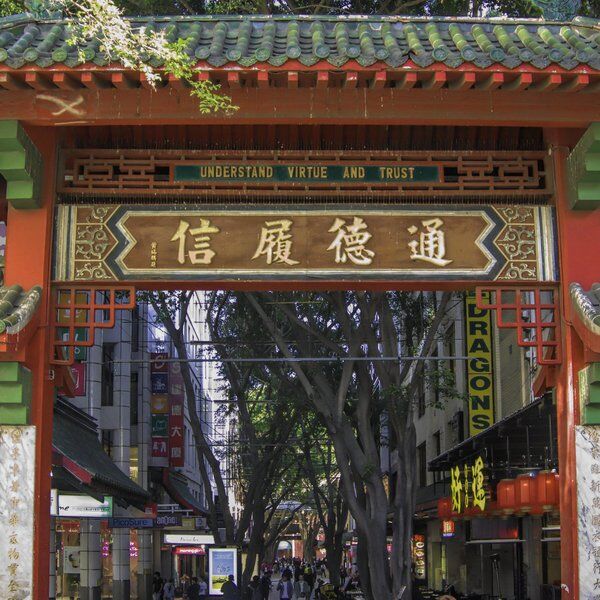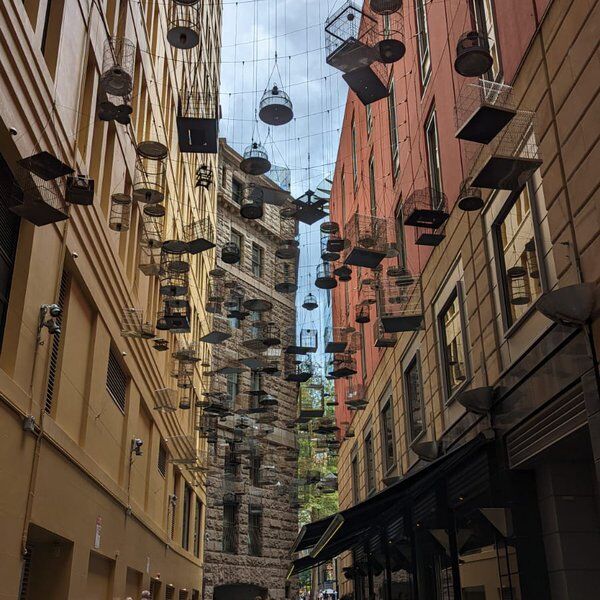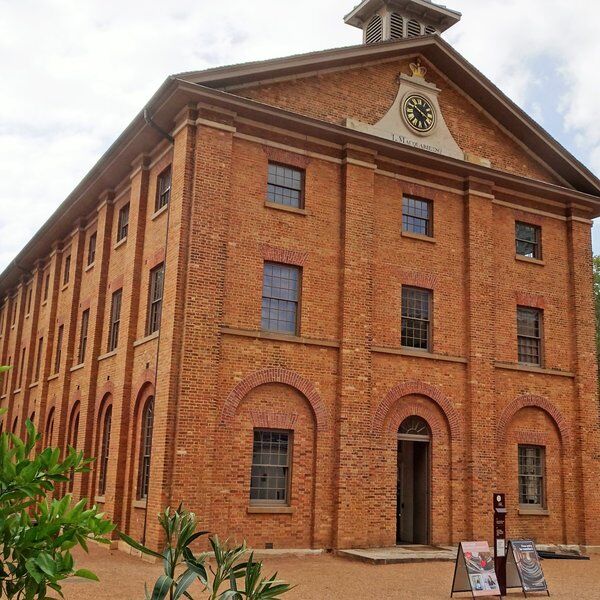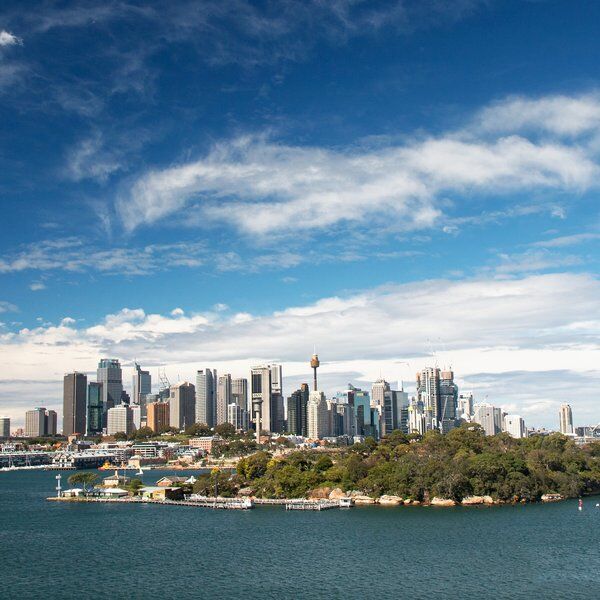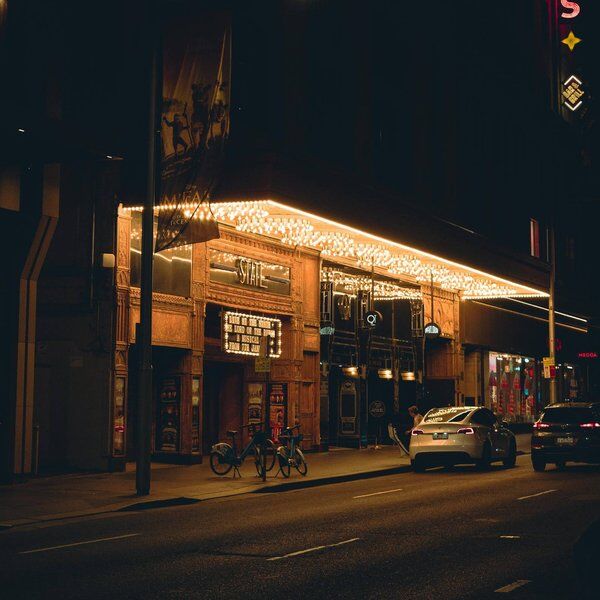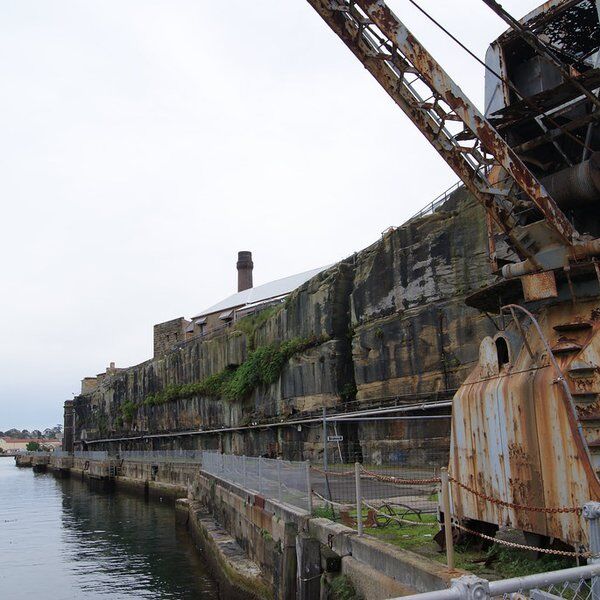Discover Waverley Cemetery in Sydney’s Eastern Suburbs
On the dramatic cliffs of Bronte, Waverley Cemetery is a state-heritage listed site and a captivating place that draws visitors for more than just its panoramic ocean views. Established in 1877, this iconic cemetery is one of Sydney’s oldest, continuing to provide funeral services for over 145 years. The decision to establish the cemetery was driven by the growing need for burial spaces in Sydney’s eastern suburbs. With its rich history, stunning Victorian and Edwardian monuments, and as the final resting place of many significant Australians, Waverley Cemetery is a window into the social and cultural fabric of Sydney's past.

The History of Waverley Cemetery
Indigenous History
Before European settlement, the land where Waverley Cemetery now stands was traditionally inhabited by the Gadigal people of the Eora nation. Evidence of their presence in the area can be found in rock shelters, art sites, and middens along Sydney’s coast. Although there are no known Aboriginal sites within the cemetery itself, the cliff-top location is considered archaeologically important to the region’s indigenous history.
Discover more about the Aboriginal presence in Sydney here: Aboriginal Rock Engravings | CityDays.
Colonial History
After European colonisation, the need for cemeteries in Sydney became increasingly pressing. Initially, burials took place in the Old Sydney Burial Ground, but by the mid-19th century, space was running out. The Waverley Municipal Council, formed in 1859, recognised the necessity of a cemetery to serve the local community, purchasing 10 acres of land in 1868. This decision came at a time when attitudes toward death and burials were shifting towards creating serene, park-like environments where people could remember and commemorate their loved ones in peaceful surroundings.

Creating Waverley Cemetery
Waverley Cemetery was officially opened on August 1, 1877, with the first burial occurring just days later. Its striking location on a clifftop overlooking the Tasman Sea makes it one of the most visually stunning burial grounds in Australia and a popular location for visitors.
During the Victorian era, cemeteries evolved from gloomy, utilitarian spaces to places that celebrated life, and Waverley Cemetery was designed with this in mind. Covering 16 hectares, the cemetery maintains much of its original geometric Victorian design, with a grand, grid-like layout and elaborate use of white Carrara marble monuments. These monuments are not only grand in stature, they are also diverse in style, reflecting the changing social attitudes towards death over the years.
As the cemetery expanded, more land was acquired, growing to its current size of 40 acres. Over the decades, the cemetery has also evolved with changing societal values, adding ash gardens and cremation services in response to Sydney’s growing preference for cremation.

Monuments at Waverley Cemetery
Waverley Cemetery is often described as an "open-air museum" due to its impressive collection of Victorian and Edwardian monuments, some of the finest examples in Australia. The most impressive examples include intricately decorated Victorian-era obelisks, gothic-style family vaults, with grand arches and stained-glass windows, and memorials commemorating historical events. The Stuart family vault, designed by architects Walter Burley Griffin and Marion Mahony Griffin, is particularly noteworthy for its gothic detailing and use of granite.
One of the cemetery’s most impressive features is the 1798 Memorial, a large and intricately designed monument dedicated to Irish rebels of the 1798 Irish Rebellion. Crafted from Carrara marble, the memorial commemorates the struggle for Irish independence and houses the remains of Irish revolutionary Michael Dwyer and his wife, Mary. This striking monument, completed in 1901, is the largest of its kind in the world, attracting visitors interested in both history and architecture.
The cemetery also contains several original buildings, including a sandstone office, residence, and amenities building, as well as shelters scattered throughout the grounds. Mature Norfolk Island Pines and Canary Island Date Palms contribute to the landscape’s enduring Victorian character.
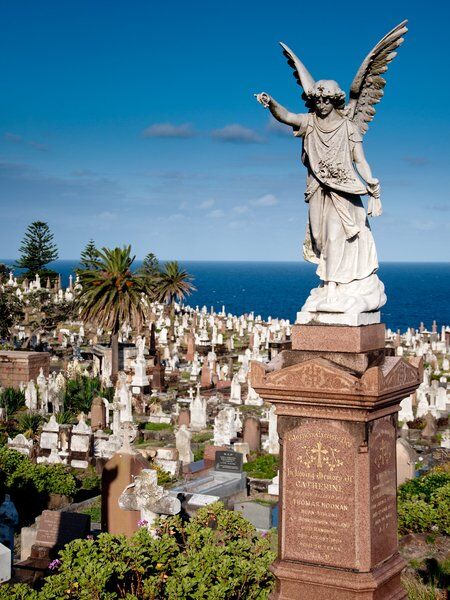
Waverley Cemetery Today
Today, Waverley Cemetery remains an active burial site, with more than 100,000 interments. Managed by Waverley Council, the cemetery is self-funded through burial, cremation, and memorial services.
Despite its primary function as a burial site, Waverley Cemetery’s combination of natural beauty and historical significance has garnered international attention, earning it a place among the world’s most beautiful cemeteries alongside London’s Highgate and Paris’ Père Lachaise. The breathtaking contrast between the rugged Australian coastline and the refined Victorian monuments creates an atmosphere that is both tranquil and awe-inspiring.
Visitors are often struck by the intricate symbolism found in the headstones and monuments. Angels, broken columns, and weeping willows carved into the marble are reminders of lives lost too soon or unfulfilled. These Victorian-era designs offer a glimpse into the cultural values of the time, where coded messages conveyed sentiments of eternal love, grief, and remembrance.
Cultural Significance
Waverley Cemetery also continues to play a role in Sydney’s cultural life, having been featured in films such as Tim (1979) and Long Story Short (2021). Its scenic location along the Bondi to Bronte Coastal Walk, makes it part of a larger day trip, and the cemetery remains a significant heritage site, listed on the New South Wales State Heritage Register in 2016.
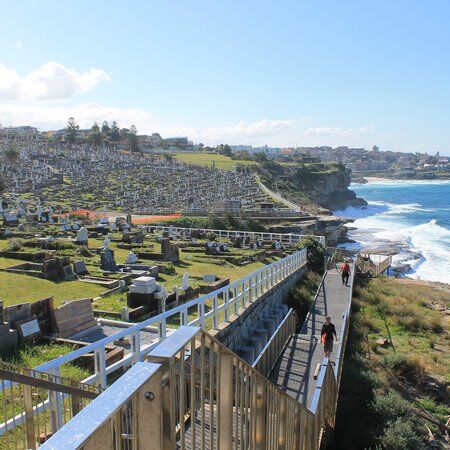
Heritage Significance of Waverley Cemetery
Waverley Cemetery is recognized for its outstanding cultural, historical, and aesthetic value, earning listings on both the New South Wales State Heritage Register and the Waverley Council Local Environment Plan. Its heritage status is attributed not only to its historical significance as a Victorian-era public cemetery but also to its continuous operation for nearly 150 years.
The preservation of Waverley Cemetery is crucial for understanding the evolution of burial practices, social attitudes toward death, and the artistic styles that have influenced Australian funerary monuments. It remains a valuable educational resource for genealogists, historians, and architects.
Challenges in Preservation
However, preserving Waverley Cemetery has been met with challenges. The coastal environment exposes the cemetery to natural forces like wind and salt erosion, which contribute to the deterioration of headstones and monuments. Additionally, the responsibility for maintaining individual graves often falls to the families of the deceased, meaning that some graves have fallen into disrepair over time.
Despite these challenges, Waverley Cemetery continues to be an essential cultural and historical site. Ongoing conservation efforts, supported by its heritage listings, aim to protect and preserve the cemetery for the future.
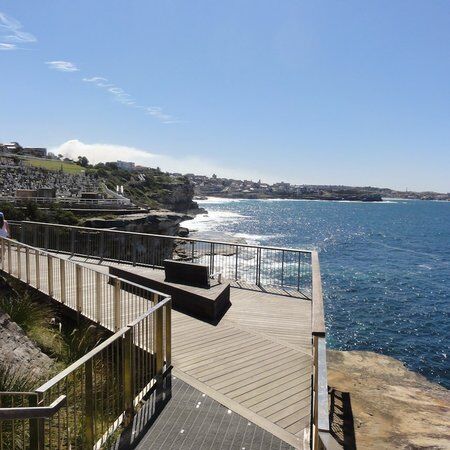
People Buried at Waverley Cemetery
The cemetery serves as the final resting place for more than 100,000 people, including famous literary figures, athletes, politicians, and other influential personalities. The diversity of those buried here reflects the wide range of people who have contributed to Sydney’s growth and development over the centuries.
Literary Figures
One of the most famous graves at Waverley Cemetery belongs to Henry Lawson, a beloved Australian poet and short story writer. Lawson’s works, such as While the Billy Boils (1896), have become Australian classics. Today, his grave is visited by fans from all over the world.
Another important literary figure is Dorothea Mackellar, known for her iconic poem My Country, which remains a favorite in Australian poetry. Jules Archibald, the founder of The Bulletin and benefactor of the prestigious Archibald Prize, is also buried here, alongside Louis Becke, a 19th-century writer whose works vividly portray the Pacific Islands. Ethel Pedley, author of the cherished children's book Dot and the Kangaroo, also rests in Waverley.

Sporting Legends
Victor Trumper, regarded as one of the greatest cricketers of all time, has his final resting place in Waverley. Known for his elegant batting style, Trumper's contributions to Australian cricket continue to be celebrated today. Swimmer Fanny Durack, the first Australian woman to win an Olympic gold medal, is another sporting hero buried at the cemetery.
Political and Historical Figures
Many political and historical figures are buried at Waverley Cemetery, including Sir James Martin, a former Premier and Chief Justice of New South Wales. His legacy is so impactful that Martin Place in Sydney is named after him. Another significant burial is Lawrence Hargrave, an aeronautical engineer who contributed to early aviation development.
Additionally, several veterans of the U.S. Civil War are buried at Waverley, such as Phineas S. Thompson. The cemetery also features graves and memorials dedicated to Australian soldiers from both World Wars.
The Everyday People of Sydney
Beyond the famous, Waverley Cemetery also contains graves of everyday individuals who lived and worked in Sydney. From a sailor lost at sea to a young child taken by illness, each gravestone tells a unique story that adds depth to the cemetery’s history.
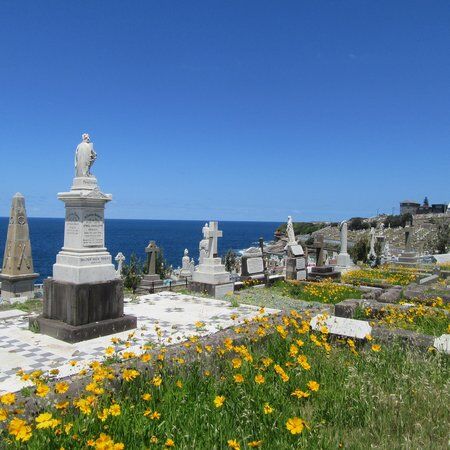
South Head Cemetery: A Companion to Waverley Cemetery
Located at the intersection of New South Head Road and Old South Head Road in Vaucluse, South Head Cemetery shares a close association with Waverley Cemetery, both administered by Waverley Council. Established in 1868 to serve the growing population of Vaucluse, it spans four acres and contains around 6,000 graves. Initially run by a private trust, its management shifted to Waverley Council in 1941.
South Head Cemetery is the final resting place of numerous influential figures in Australian history, including Edmund Barton, Australia’s first Prime Minister, and Sir Roden Cutler, a recipient of the Victoria Cross. Additionally, members of the prominent Fairfax, Packer, and Street families are buried here, along with several distinguished architects, artists, and writers. The cemetery also holds the graves of 22 victims from the 1927 Greycliffe ferry disaster, as well as Commonwealth war graves from both World Wars.
Despite its smaller size compared to Waverley Cemetery, South Head Cemetery’s historical significance and its similarly serene coastal setting offer an equally peaceful atmosphere for reflection and remembrance.
Visiting Waverley Cemetery
One of the unique features of Waverley Cemetery is its breathtaking location. Perched on the cliffs above Bronte Beach, the panoramic ocean views provide a serene backdrop for the many impressive monuments and memorials. As part of the Bondi to Coogee Coastal Walk, the cemetery attracts visitors not only for its historical significance but also for its picturesque scenery.
For more coastal walks in Sydney, click here: Royal National Park Walks | CityDays.
Since the cemetery is part of the coastal track and also spans a large area inside, comfortable walking shoes are recommended. Don’t forget sunscreen and a hat, as Sydney’s sun can be harsh. Additionally, bring plenty of water, especially on hot days. A map of the cemetery is available online to help guide your visit, and it’s wise to download it before you arrive.
Opening Hours and Accessibility
Waverley cemetery is open daily from 9:00 am to 4:00 pm (5:00 pm during Daylight Saving Time), and entry is free, although donations are encouraged to help with its upkeep. Visitors are welcome to wander the grounds at their leisure, exploring the numerous historic graves and monuments. There are also guided walking tours available, which explore the cemetery’s past and the lives of its many famous residents.
Accessing the cemetery is straightforward and it is easily accessible by public transport, with a short walk from the nearest bus stop on Bondi Road. For those driving, street parking is available, though it can be limited, especially on weekends.
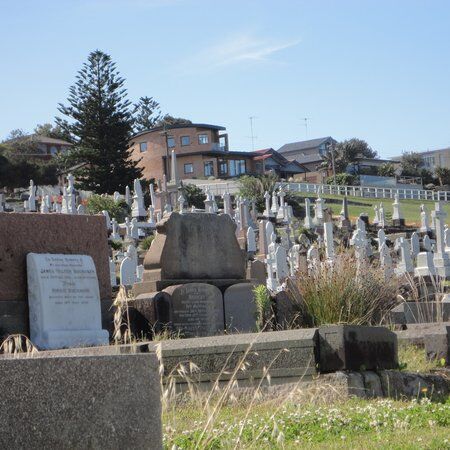
Explore Beyond the Waverley Cemetery with CityDays
While Waverley Cemetery offers a profound connection to Sydney’s history and heritage, there’s much more to explore beyond its gates. CityDays offers scavenger hunts and treasure hunt tours in Sydney that take you on an adventure through the city’s rich urban landscape.
These tours provide an interactive and engaging way to explore the city's landmarks, hidden gems, and historic sites, perfect for team-building exercises, dates ideas, or group outings.
CityDays' scavenger hunts are carefully crafted to combine trivia, puzzles, and local history, ensuring that participants experience Sydney in a fun and educational way.
For more information about our scavenger hunts in Sydney, or all over the world, click here: Sydney Scavenger & Treasure Hunts | CityDays.









